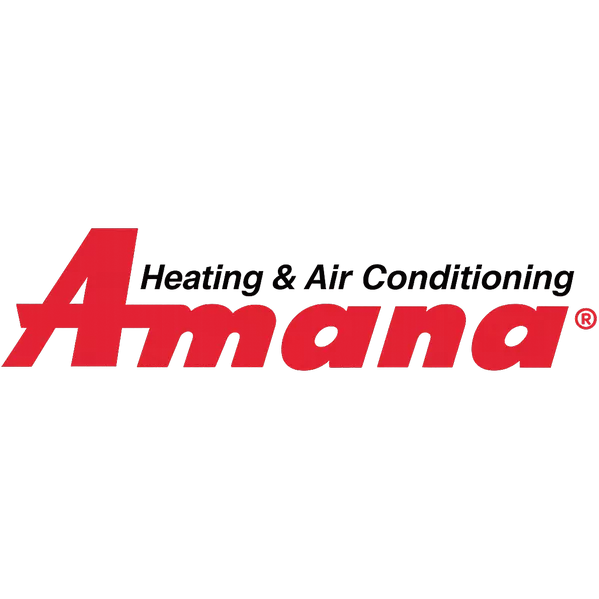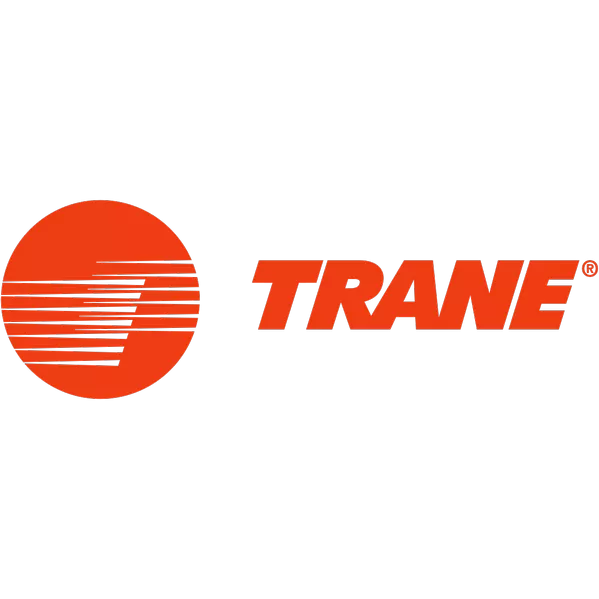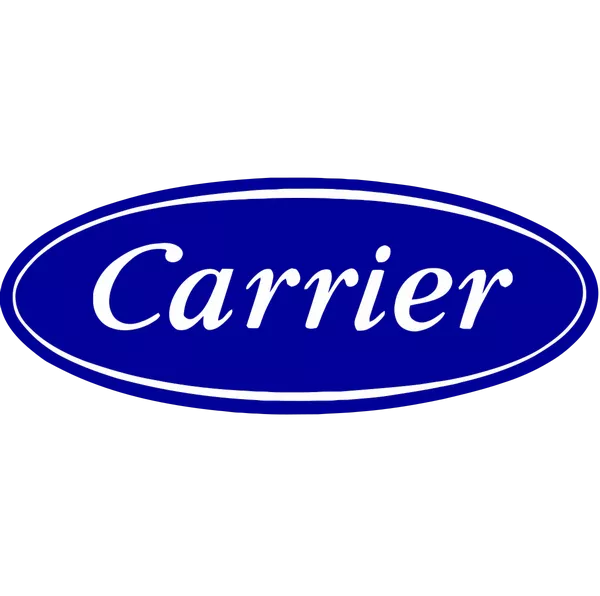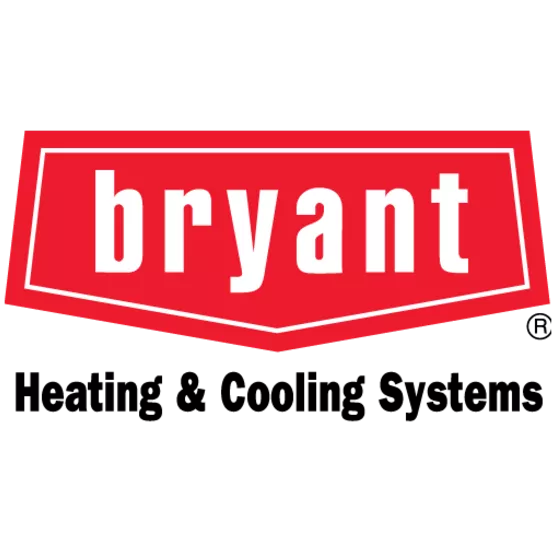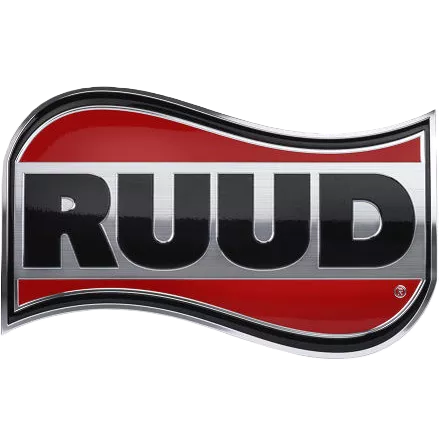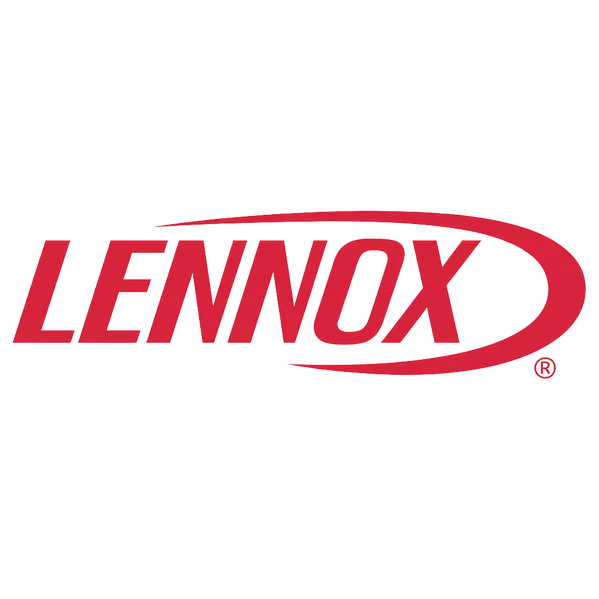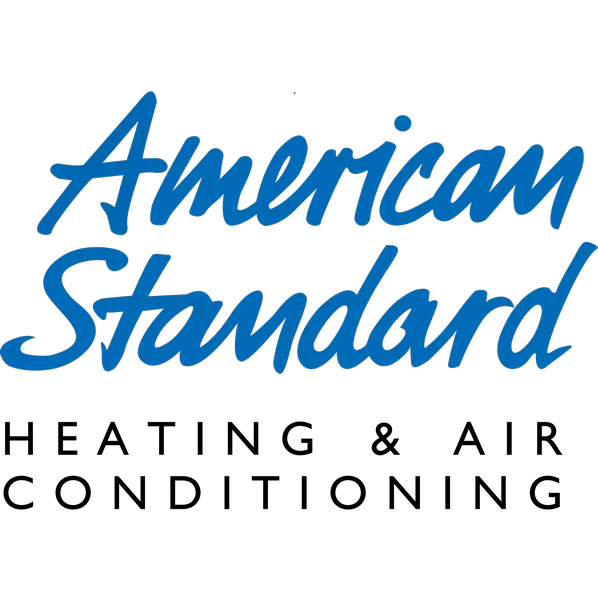Trane: This lineup is built around repeatable installation discipline and hardware that stays calm at low speed. Outdoor cabinets favor clean airflow, indoor blowers are mapped carefully to duct targets, and the documentation pushes contractors to verify the numbers instead of guessing. For this comparison the stack is XV20i variable-speed central AC, S9V2-VS variable-speed gas furnace, and XV20i variable-speed heat pump. Everything below evaluates how these three behave when commissioned together as a communicating system, not as isolated boxes.
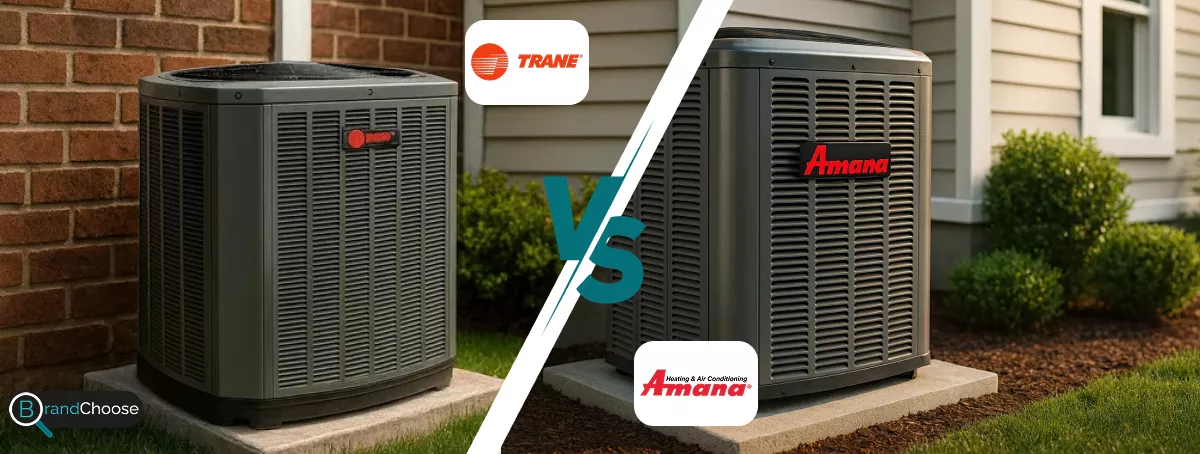
Amana: The premium tier aims for inverter comfort that is easy to live with and easy to service. Controls are straightforward, matched-set guidance is clear, and the upgrade path from basic to communicating does not force a learning curve on the homeowner. Here we use ALXT7C variable-speed central AC, AMVM97 modulating gas furnace, and AZV7S variable-speed heat pump. The judgments that follow reflect how this trio performs as a coordinated set.
Product Selection
| Primary Use Case | Trane | Amana | ||
| Air Conditioner | XV20i | 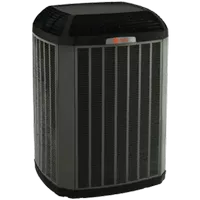 |
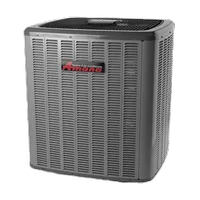 |
ALXT7C |
| Gas Furnace | S9V2-VS | 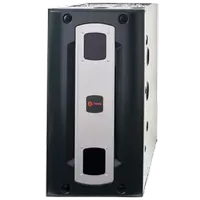 |
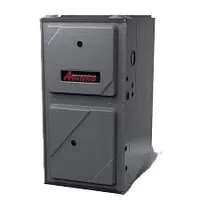 |
AMVM97 |
| Heat Pump | XV20i | 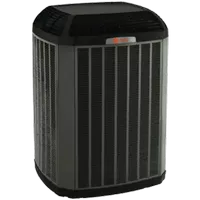 |
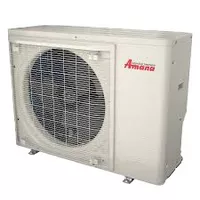 |
AZV7S |
🟦 Trane: The product tree is simple to navigate for pros and owners alike. XV sits at the top for variable capacity, with XL and XR covering the mid and entry rungs. The value is not just the labels but the pairing tables: multiple approved indoor coils and air handlers let an installer pick airflow and staging that fit the actual duct static in the house. With XV20i + S9V2-VS + XV20i HP, the modulation range scales cleanly from 2 to 4 tons, and the blower tables make it practical to hit target airflow in older duct systems without resorting to blunt fixes.
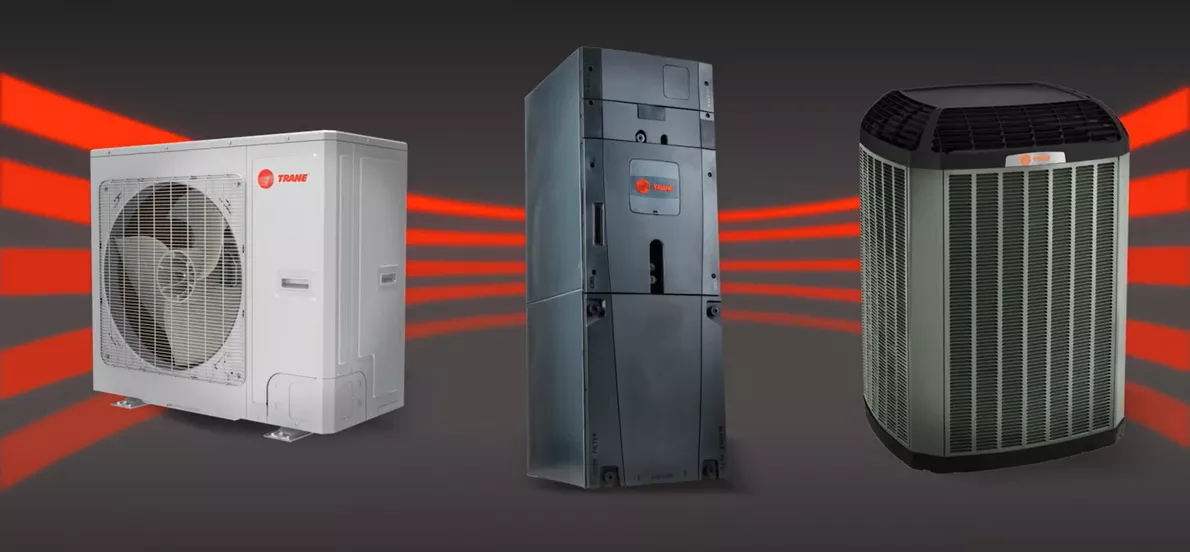
🟪 Amana: The premium 7-series inverter gear anchors the lineup, then it steps down cleanly into two-stage and single-stage options. The ALXT7C + AMVM97 + AZV7S combination shows up frequently in real-world retrofits because it delivers quiet, long cycles without forcing a complex control experience. The brand’s matched-system documentation ties outdoor units, coils or furnaces, and settings together so features survive a tonnage change or a later zoning add.

✅ Verdict: Trane is the technician’s playground for dialing in airflow and staging, while Amana is the shopper’s straight line from good to flagship.
Customer Support & Warranty
🟦 Trane: Registration provides 10-year parts and strong furnace heat-exchanger terms. What owners feel day to day is the process uniformity: distributors typically stock the common boards, ECM motors, and sensors, and the communicating thermostat preserves equipment IDs and fault history after swaps. In busy season that often means one visit, one part, done.
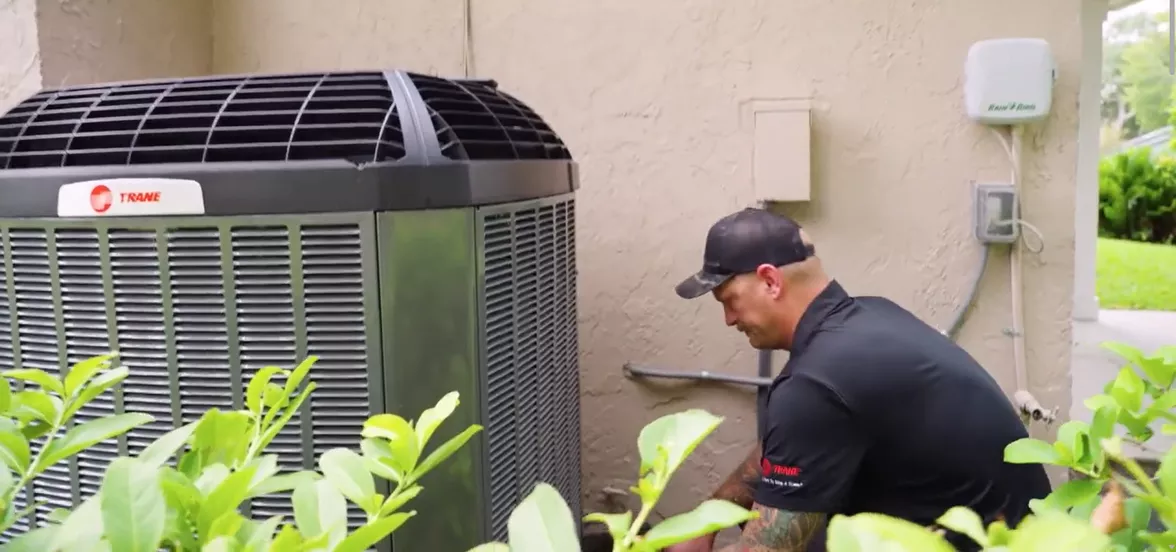
🟪 Amana: Registration likewise yields 10-year parts with robust exchanger coverage, and national distribution under a well-known umbrella brand helps keep replacements moving. The platform’s emphasis on approved matchups and retaining the communicating control means diagnostics remain intact after a coil or board change, which shortens the learning curve for service techs.
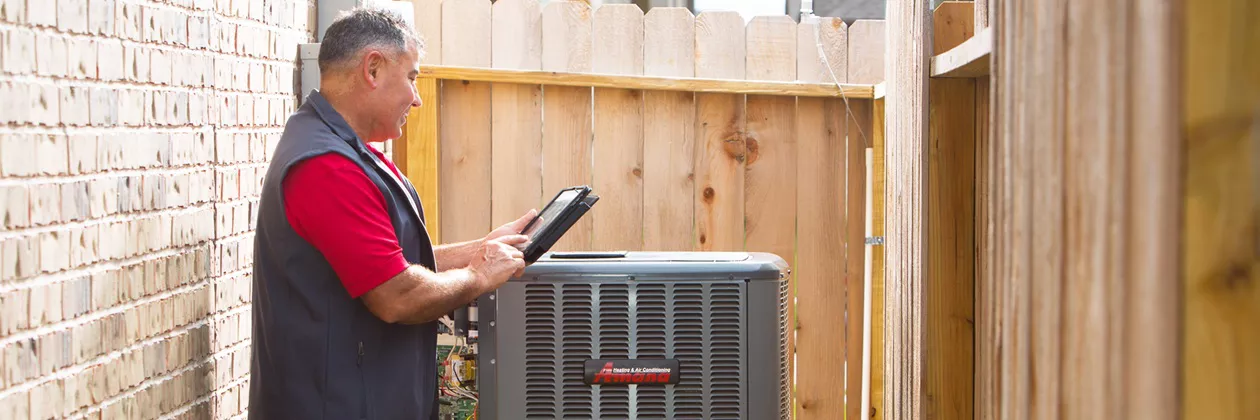
✅ Verdict: Trane earns the nod for coast-to-coast consistency, while Amana matches closely where local distribution is strong and documentation is followed.
Energy Efficiency
🟦 Trane: The XV20i AC and HP live in the premium SEER2 tier (SEER2 is the current seasonal cooling efficiency metric), the S9V2-VS furnace operates in the high-90s AFUE band (AFUE is gas furnace fuel-to-heat efficiency), and the pairing relies on long, low-power runs to harvest savings. That is the inverter plus ECM blower formula (ECM means electronically commutated motor that varies speed precisely). When ducts are tight and refrigerant charge is confirmed by superheat and subcool checks (superheat and subcool are temperature tests that verify the refrigerant is boiling and condensing in the right places), double-digit bill reductions versus 12–14 SEER legacy systems are routine without comfort trade-offs.
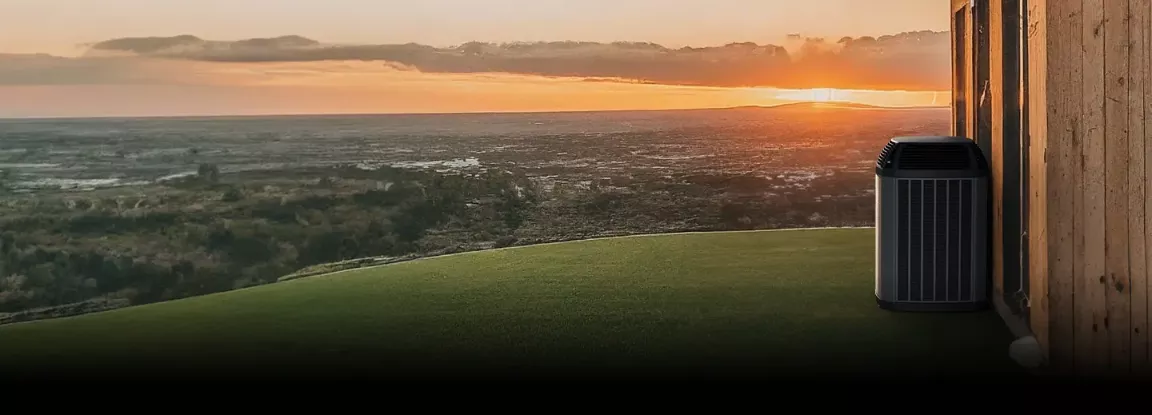
🟪 Amana: The ALXT7C and AZV7S target upper-tier SEER2/HSPF2 results (HSPF2 is seasonal heating efficiency for heat pumps). The AMVM97 furnace contributes ultra-high AFUE while the communicating control keeps coil temperature and airflow aligned so humidity removal does not require dropping the setpoint. In other words, the numbers are not just on paper. With airflow set near 350–400 cfm per ton (target airflow per ton of cooling) and a verified charge, the low-speed steadiness translates to real savings through muggy shoulder seasons.
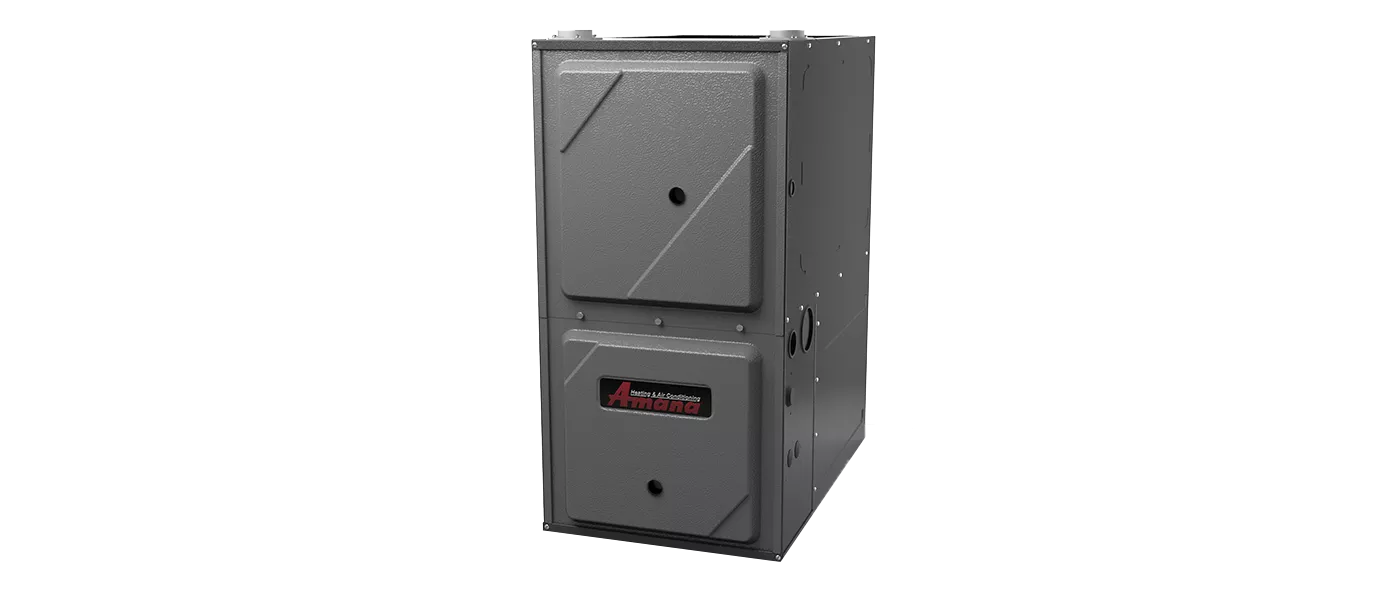
✅ Verdict: Trane is the conservative pick for efficiency that tracks predictably across climates, while Amana delivers essentially the same real-world outcome when airflow and charge are dialed in.
Smart Features & Connectivity
🟦 Trane: This is a fully communicating thermostat approach (the control and equipment share live data so modulation targets comfort rather than simple on off). The control coordinates compressor speed, blower cfm, and coil temperature, supports zoning, and logs events that point a technician to the root cause instead of the symptom. Staying inside the ecosystem protects deeper behaviors like staged airflow during humidity pulls and dual-fuel balance-point logic.
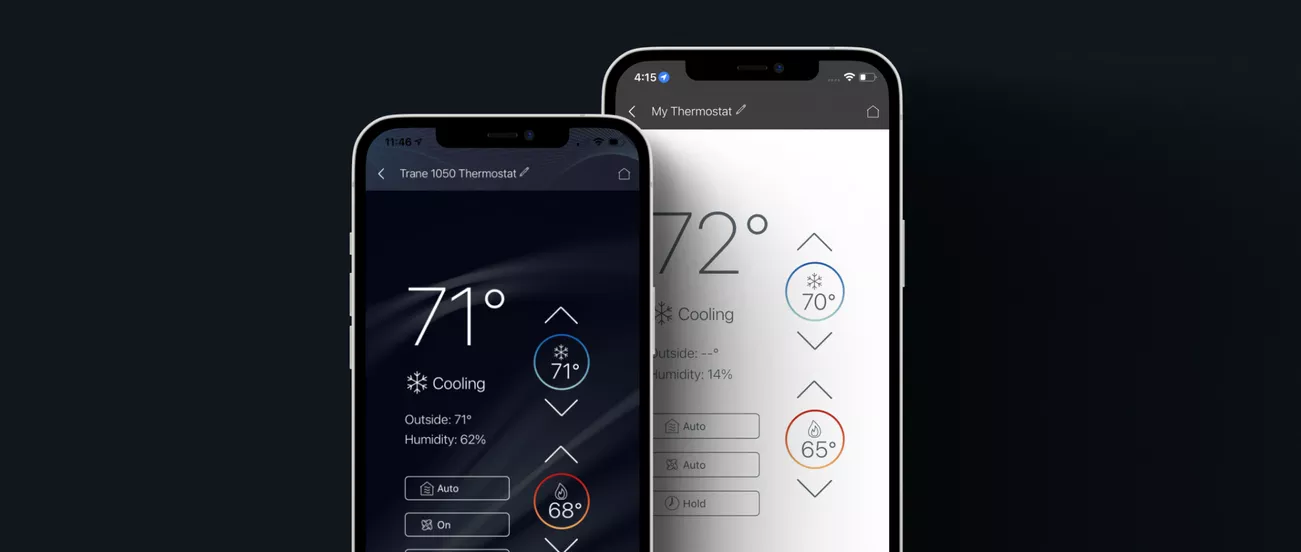
🟪 Amana: The control philosophy is intentionally approachable. Communicating operation unlocks variable capacity, humidity targets, schedules, and clean diagnostics without forcing a fiddly interface on the homeowner. IAQ add-ons plug in as matched modules, which keeps the airflow strategy and dehumidification logic intact after upgrades, and day-to-day use stays simple.
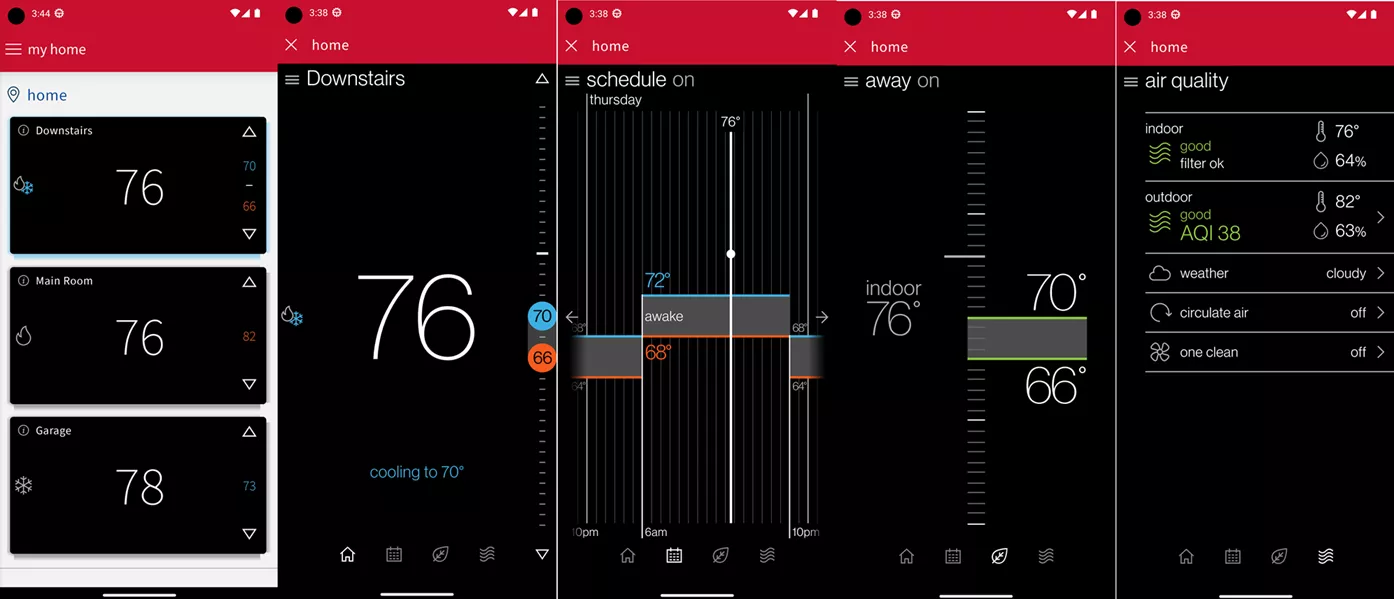
✅ Verdict: Trane leans toward deep diagnostics under one umbrella, while Amana delivers the same core levers with a lighter touch that non-tinkerers tend to prefer.
Noise Level
🟦 Trane: At everyday loads the XV20i condenser and the S9V2-VS blower live at modest rpm, so the soundscape is a low, diffuse wash rather than a whine. The top-discharge design lifts airflow vertically, which reduces wall reflections in tight side yards, and the compressor sits on isolators that blunt cabinet resonance. Outdoor loudness is rated in dB (decibels, a logarithmic sound unit), but the real trick is to keep the inverter loitering at low speed where blade passage noise is minimal. Indoors, carefully mapped blower tables prevent sudden jumps in airflow; with external static pressure kept reasonable (external static pressure is duct resistance measured in inches of water column), registers give a hush instead of a whoosh.
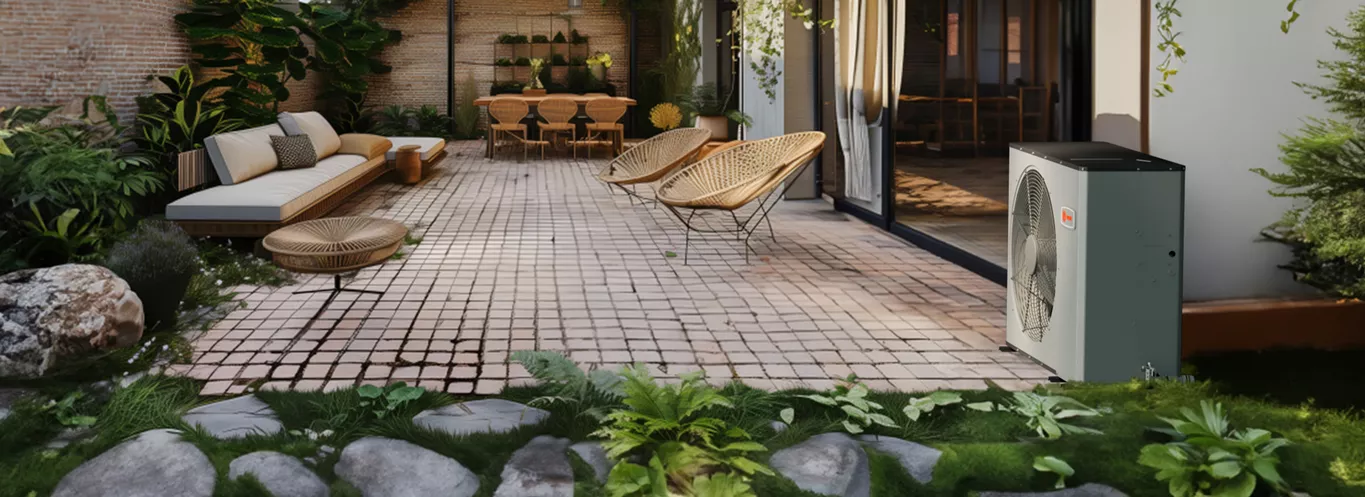
🟪 Amana: The ALXT7C leans on an inverter and a swept-blade fan to smooth the outdoor note, while multi-density cabinet insulation and a compressor blanket help bury tones that carry across fences. Inside, the AMVM97’s variable ECM motor (electronically commutated motor that modulates speed precisely) ramps in small steps, which keeps older trunks from drumming when airflow changes. As with any premium setup, the quietest installs pair a level pad and a short flex section on the line set with well-sized returns, sealed filter racks, and clean coils, so the system can stay at low rpm longer.

✅ Verdict: Trane has the edge outdoors in tight lot lines thanks to top-discharge and vibration control, while Amana often sounds especially calm at the registers when return sizing is generous.
Cost & Affordability
🟦 Trane: Premium variable capacity sits in premium installed-price territory. Typical installed ranges for a 3-ton reference with standard labor and no duct replacement: AC only XV20i 11,500–20,000 USD, furnace only S9V2-VS 6,000–9,500 USD, heat pump only XV20i 12,500–22,000 USD. A matched AC + furnace package commonly lands 15,500–29,000 USD, and dual-fuel is often 17,500–33,000 USD. Add 10–25 percent for electrical upgrades, crane lifts, or static-correction duct work; subtract available rebates and off-season promos.
🟪 Amana: Quotes track the same tier but frequently undercut by a notch like for like. Common 3-ton ranges: AC only ALXT7C 10,500–18,500 USD, furnace only AMVM97 5,500–9,500 USD, heat pump only AZV7S 12,000–20,500 USD. A matched AC + furnace typically prices 15,000–28,000 USD, and dual-fuel about 17,000–31,000 USD. The spread is driven more by zoning, IAQ accessories, and duct remediation than by the badge on the cabinet.

✅ Verdict: Amana usually lands the softer quote at the same comfort tier, while Trane tends to sit near the top of the premium bracket.
Reliability & Durability
🟦 Trane: Outdoor cabinets are rigid and the coil design sheds debris well, which helps keep condensing temperatures in check during heat waves. The control philosophy favors long, low-stress cycles over frequent starts, and a uniform parts pipeline means common boards, sensors, and ECM modules are usually close at hand in season. Real longevity still rests on fundamentals: charge confirmed by superheat and subcool readings (temperature checks that verify the refrigerant is boiling and condensing in the right places), airflow near 350–400 cfm per ton (target airflow per ton of cooling), and coils kept clean enough to move heat.

🟪 Amana: Cabinets use corrosion-resistant finishes, indoor coils are aluminum to sidestep formicary corrosion risk over time (formicary corrosion is microscopic copper pitting from household organics), and the furnace’s modulation plus soft blower ramps lower mechanical stress. Documentation for approved coil and control pairings is clear, so communicating features survive board or coil swaps. Where local distribution is strong, repair timelines are predictable; where stocking is thin, lead time, not hardware, becomes the variable.
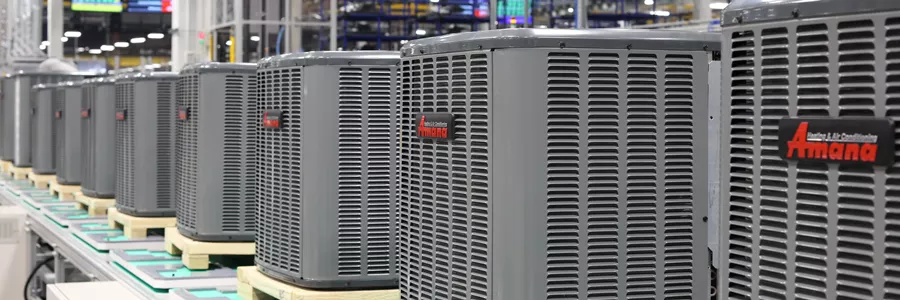
✅ Verdict: Trane earns a practical nod on parts logistics and process uniformity, while Amana matches on hardware toughness when commissioning and maintenance are meticulous.
Cooling Performance
🟦 Trane: The inverter matches outdoor capacity to indoor airflow so the evaporator stays just cold enough to handle sensible and latent load together (sensible is temperature change, latent is moisture removal). During humidity pulls the control trims cfm per ton to keep the coil colder longer, which boosts moisture pickup without overcooling rooms. In practice you see a stable supply-air delta-T across the coil (delta-T is the return-to-supply temperature drop) and indoor RH hovering mid-40s to near-50 percent through muggy stretches, with distant rooms steadier because air keeps moving at low power.

🟪 Amana: Deep low-speed turndown is used to park the coil and blower in a sweet spot for latent control, so SHR stays balanced (SHR, sensible heat ratio, is the share of total cooling devoted to temperature rather than moisture). Longer, quieter cycles keep air circulating into far branches, which reduces temperature drift at the ends of runs. With a properly matched coil, a correctly set TXV (thermostatic expansion valve that meters refrigerant to keep the coil in range), and a verified charge, rooms feel dry-comfortable without chasing lower setpoints.
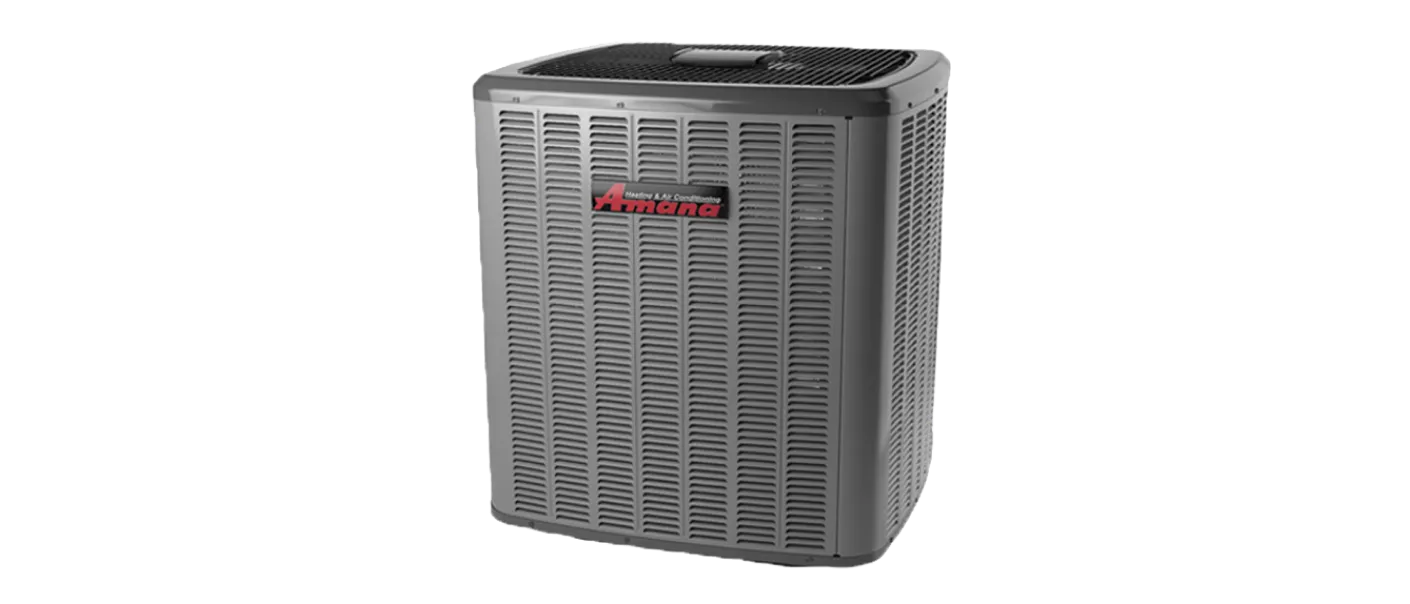
✅ Verdict: Trane favors rock-steady temperatures with confident dehumidification, while Amana is excellent at smooth, low-speed moisture removal that keeps spaces dry without nudging the thermostat down.
Heating Performance
🟦 Trane: The S9V2-VS furnace spends most winter hours on low fire with a variable ECM blower that eases airflow up and down, so rooms warm gradually and stay there without swings. The XV20i heat pump holds usable capacity deep into cool evenings by favoring long low-speed runs, and demand defrost keeps the outdoor coil clear without frequent reversals. In dual fuel the control uses a configurable balance point – the outdoor temperature where gas heat becomes the better choice for cost or comfort – so the handoff from electric to gas is quiet and timed to real weather rather than the calendar.
🟪 Amana: The AMVM97 modulating furnace trims fuel in fine steps and pairs that with smooth blower ramps, which keeps supply air consistent across long cycles. The AZV7S heat pump leans on deep inverter turndown for steady low-speed heating in shoulder seasons, with a defrost profile that minimizes cold-blow after recovery. Dual fuel is equally straightforward to program, so electric carries mild days while gas picks up during hard freezes, and the whole trio scales predictably across sizes.

✅ Verdict: Trane feels a touch more composed during dual-fuel transitions in mixed climates, while Amana is especially smooth through shoulder-season heat pump runs.
Indoor Air-Quality Enhancements
🟦 Trane: The communicating control treats IAQ as part of system logic, not an accessory. High MERV media cabinets drop in cleanly (MERV rates a filter’s particle-capture size), humidifiers and dehumidifiers coordinate with blower speed, and balanced ventilation with ERV/HRV can be scheduled to match occupancy (ERV/HRV exchange heat or moisture while bringing in fresh air). During sticky weather the controller trims cfm per ton so the coil stays a bit colder for stronger latent removal, which holds indoor RH near the comfort band without overcooling rooms. Fault logs preserve IAQ run history, which helps tune settings at seasonal checkups.
🟪 Amana: Media filtration, electronic or UV cleaners, and ERV/HRV modules integrate as matched components, and airflow targets are guarded so IAQ upgrades do not push external static pressure out of range (external static pressure is the duct system’s resistance, measured in inches of water column). Long low-speed cycles increase filter contact time, and humidity profiles bias fan speed when RH rises to keep spaces from feeling cool but clammy. Because accessories are documented in the matchups, diagnostics remain useful after add-ons and service swaps.

✅ Verdict: Trane earns a nod for one-umbrella coordination that keeps IAQ, airflow, and dehumidification marching together, while Amana focuses on protecting pressures so upgrades do not disturb quiet, low-speed comfort.
Installation & Serviceability
🟦 Trane: Premium results begin with Manual J load, Manual S selection, and Manual D duct design, followed by verification in the field. Commissioning targets include 350–400 cfm per ton, total external static at or below equipment ratings, nitrogen pressure testing, deep evacuation, and charge set by superheat and subcool readings (superheat and subcool confirm the refrigerant is boiling and condensing in the right places). The communicating thermostat exposes coil, compressor, and blower data along with event logs, so techs can validate coil delta-T quickly (delta-T is the return-to-supply temperature drop). Service panels are generous and board layouts are clear, which shortens midsummer calls.

🟪 Amana: Premium results begin with Manual J load, Manual S selection, and Manual D duct design, followed by verification in the field. Commissioning targets include 350–400 cfm per ton, total external static at or below equipment ratings, nitrogen pressure testing, deep evacuation, and charge set by superheat and subcool readings (superheat and subcool confirm the refrigerant is boiling and condensing in the right places). The communicating thermostat exposes coil, compressor, and blower data along with event logs, so techs can validate coil delta-T quickly (delta-T is the return-to-supply temperature drop). Service panels are generous and board layouts are clear, which shortens midsummer calls.
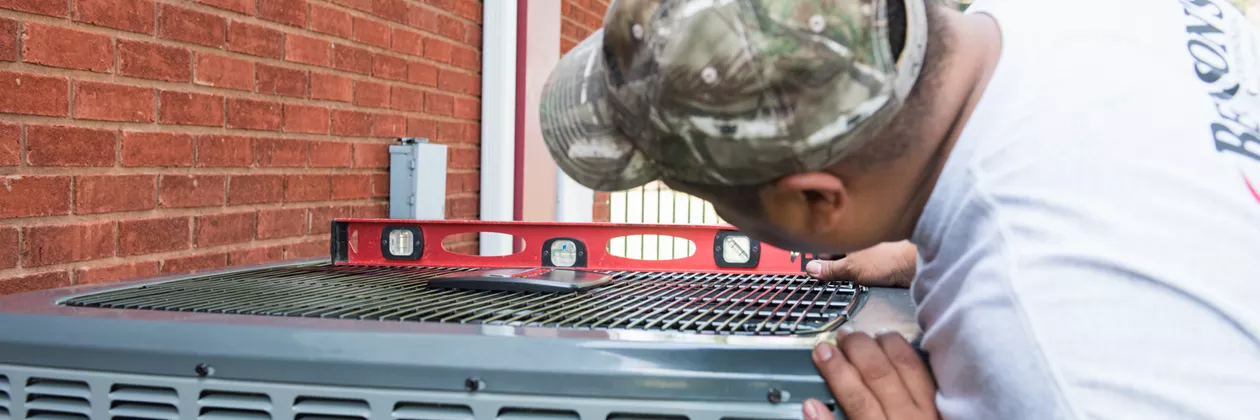
✅ Verdict: Trane has a practical edge on coast-to-coast process uniformity and diagnostic depth, while Amana keeps service brisk when local stocking is solid and matchups are followed to the letter.
Quick Buyer Match Guide
🟦🟦 Choose Trane if you
You want a technician-friendly platform that stays rock steady at low speed, predictable dual-fuel behavior in mixed climates, and deep diagnostics that make peak-season visits fast and decisive.
🟪🟪 Choose Amana if you
You like an inverter-first stack with a simple day-to-day interface, quotes that often land a notch lower, and IAQ upgrades that slot in cleanly without upsetting airflow targets.
Conclusion
Both lineups deliver real variable-capacity comfort, quiet indoor ramps, and modern controls that minimize babysitting. Trane leans into repeatable commissioning, top-discharge calm in tight yards, and logs that keep ownership low drama. Amana counters with an approachable control philosophy, competitive installed pricing, and a parts ecosystem that plays well with approved matchups. If your priority is the safest bet on long-run steadiness and diagnostics, choose Trane. If you want flagship comfort with a friendlier install quote and a straightforward ownership experience, choose Amana.

